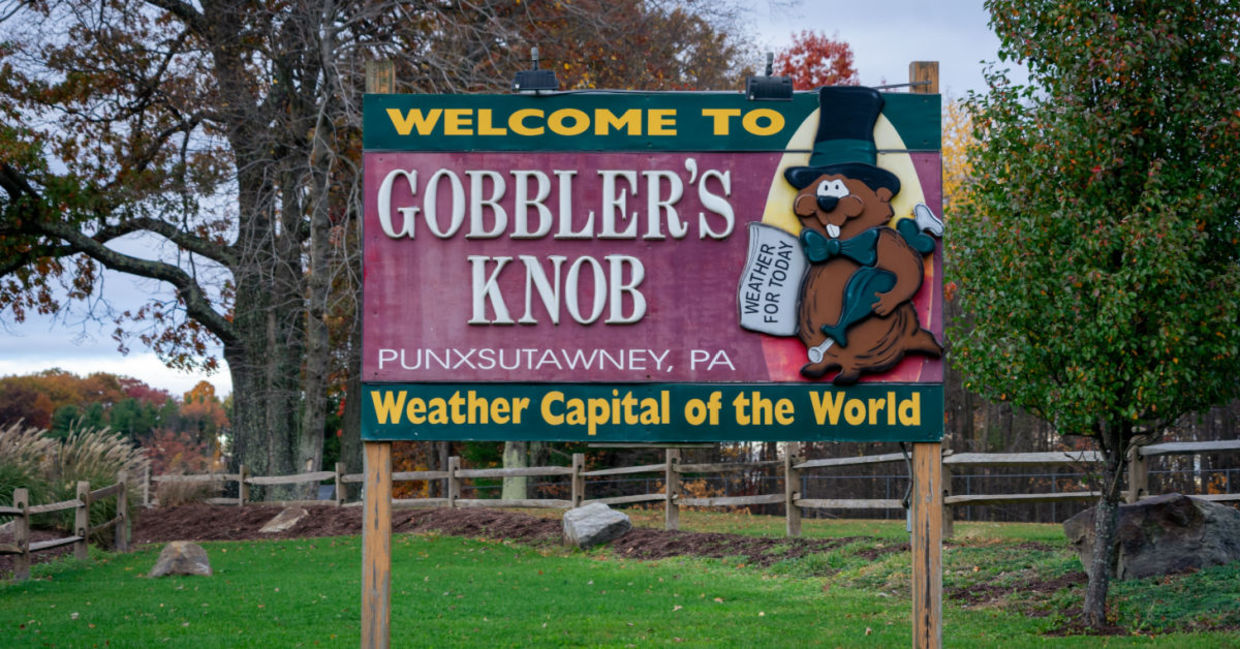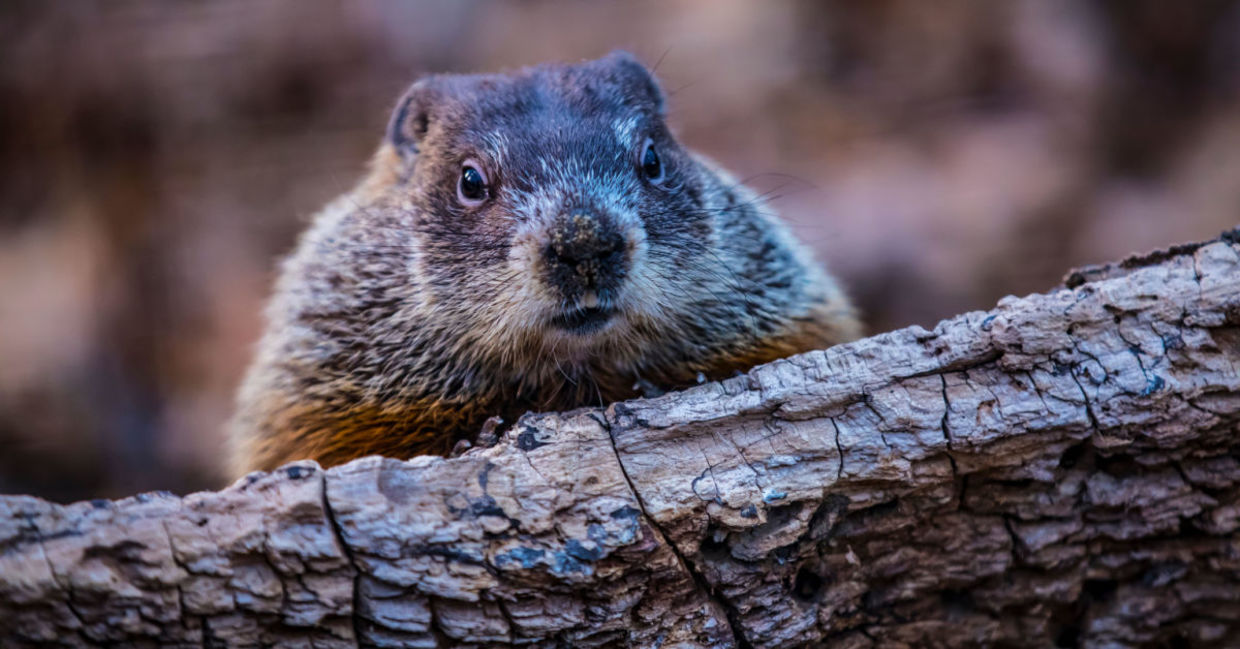
(Brian E Kushner / Shutterstock.com)
When the celebrity groundhog emerges from its burrow on February 2, a weather prediction is sure to follow. If the groundhog in Pennsylvania, Staten Island or other numerous places around the US sees its shadow then six more weeks of winter will follow. And if the groundhog doesn’t see his shadow, then spring is just around the corner.
While groundhogs are certainly not meteorologists, people still delight in this whimsical holiday. Here are nine fun facts about Groundhog Day – and groundhogs – that will brighten your day.
The first Groundhog Day Took Place in Punxsutawney, Pennsylvania
The first official Groundhog Day took place in 1887 in Punxsutawney, Pennsylvania , according to History. It was the brainchild of a local newspaper editor who convinced businessmen to join the Punxsutawney Groundhog Club. The group walked to a site called Gobbler’s knob where the awakened groundhog saw his shadow.

(KLiK Photography / Shutterstock.com)
The Movie Groundhog Day Boosted Attendance
After the release of the 1993 film Groundhog Day, attendance at the Punxsutawney celebration greatly increased to the tune of 30,000 people, according to Good Housekeeping. Thus proving that some PR can go a long way.
Groundhogs are Related to Squirrels
Groundhogs are large rodents that are one of the 14 species of marmot, otherwise known as ground squirrels, according to Live Science. These small furry animals have long tails just like other squirrels but they stay underground in burrows and not in trees.

(Rejean Aline Bedard / Shutterstock.com)
Phil is a Nickname
Phil is just a nickname for the famous groundhog’s extremely long name, Good Housekeeping shared. His official name is Punxsutawney Phil, Seer of Seers, Sage of Sages, Prognosticator of Prognosticators, and Weather Prophet Extraordinary. That’s a long name for a small furry animal.

(Mark Van Scyoc / Shutterstock.com)
Chuck is the Most Accurate Weather Predictor
Charles G. Hogg, the groundhog from Staten Island has the most accurate weather predictions, according to a Facebook Post from the Staten Island Zoo. He has an 85 percent accuracy rate. Punxsutawney Phil has less than 50 percent.
The Holiday’s Roots Came From Germany
The roots of the US tradition came from German immigrants, reported History. It began as a pagan festival that fell between the winter solstice and the spring equinox and celebrated the beginning of Spring. This later morphed into Candlemas and the belief that if the holiday fell on a sunny day, there would be another 40 days of winter. Germans put their own spin on it and pronounced the day as sunny only if small woodland animals saw their shadows

(Alessandro Barone xxx / Shutterstock.com)
Groundhogs are Also Called Woodchucks
Groundhogs are also called woodchucks , according to Live Science, as in how much wood can a woodchuck chuck. While groundhogs dig, they are not known to actually chuck wood.

(CJ Park / Shutterstock.com)
Robot Groundhogs
In the past few years, some animal rights groups are protesting using real groundhogs for this annual tradition, reported National Geographic. The solution could be robot groundhogs that are equipped with AI that detects shadows. The future Punxsutawney Phil could be robotic!

(Marahwan / Shutterststock.com)
Groundhogs Build Really Impressive Homes
A groundhog’s burrow can be up to 66 feet long and has multiple exits and chambers. Some of these burrows are even multi-storied and include one level for hibernating and one for summer. There is even a separate “bathroom” in the burrow.







